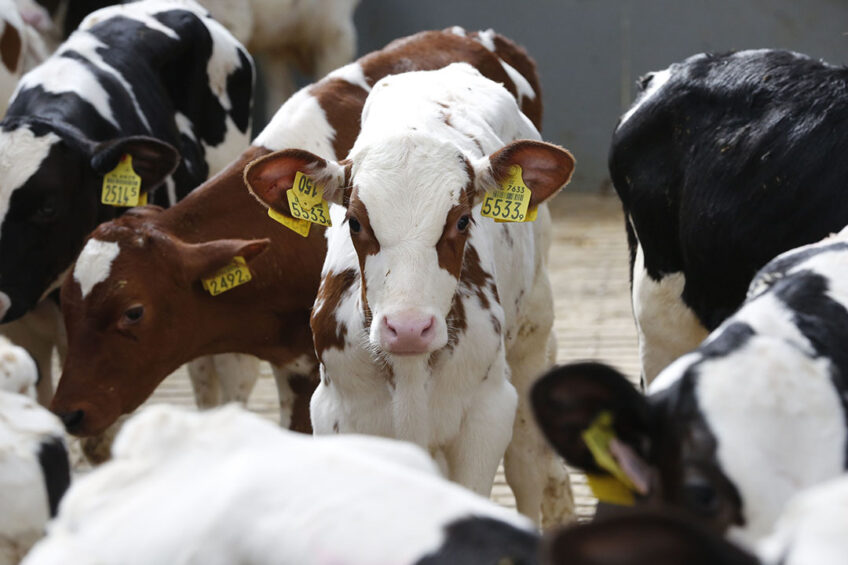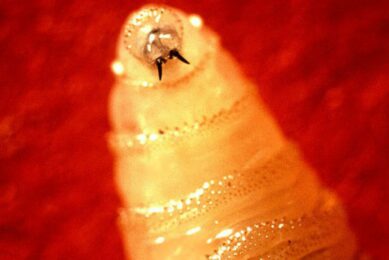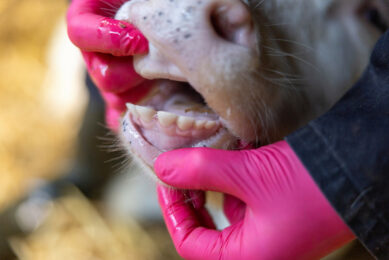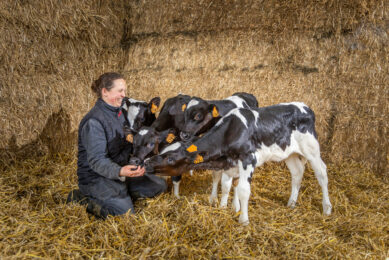Coccidiosis: A look at when dairy calves are at higher risk

Dr Tim Potter, from Westpoint Farm Vets in the UK, explains the reasons behind the increased risk of coccidiosis. Keeping calves healthy is vital, here he suggests some important steps to ensure healthy calves.
Coccidiosis causing oocysts can build up during the housed period, increasing the risk of both beef and dairy calves contracting the disease as spring progresses.

In a news release Dr Potter explains that “as stocking densities increase pre-turnout, it’s harder to keep sheds clean and dry, so you generally see a spike in oocyst numbers in the environment and therefore a heighted risk of ingestion by calves.”
He adds that coccidiosis is spread by faecal to oral transmission, so contaminated water troughs, dirty udders or sucking on dirty fences are all possible routes of infection.

“In addition to this, coccidiosis causing oocysts are sensitive to sunlight, so the dark corners in sheds can be a hotspot for oocysts, unless they’re decontaminated with an appropriate disinfectant,” says Dr Potter.
Survive up to a year
“Problems can also arise at turnout. Oocysts can survive for up to a year, so if a field was contaminated in the previous season, it’s likely that the following year’s calves will become infected upon turnout.”

Dr Potter suggests looking out for calves that appear depressed, are eating less than usual, are not growing at the expected rate or have scour with fresh blood in it, it is important to treat coccidiosis early which can lessen the impacts.
“Red blood in diarrhoea indicates that there’s damage to the lower digestive tract, and coccidiosis is a likely cause. You may also see calves with their tails up demonstrating unproductive straining, with perhaps some mucus being passed, which is due to irritation of the gut lining.”
| More about coccidiosis Coccidiosis usually occurs in dairy cattle aged between three weeks and six months. A major symptom is diarrhoea – varying in severity from watery manure to containing blood. Dehydration, weight loss, depression, stunted growth, loss of appetite, a general dull appearance and in some cases death may also occur. In most circumstances the growth and health of an animal are affected, also in less severe cases. Coccodosis is caused by the protozoan Eimeria. There are 13 different types of Eimeria species, however Eimeria bovis, Eimeria zuernil and Eimeria alabamensis are the most harmful. |
On-farm history
He also emphasises the importance of farm history. “If there was a coccidiosis issue last year, it may be worthwhile speaking to your vet about using a toltrazuril based product, such as Baycox®, to control the number of oocysts being shed into the environment before the risk period. Waiting to see signs will mean gut damage has already occurred by the time you treat.

“If you’re concerned about coccidiosis following an outbreak last year, I’d strongly recommend speaking to your vet to discuss the best approach for reducing risk on-farm. Similarly, if you’ve spotted symptoms then you’ll need to get in touch with your vet to get a diagnosis and identify the most appropriate treatment approach.”
“It takes between 15 and 21 days from ingestion of the oocyst to shedding of more oocysts in the faeces, so if one animal is showing symptoms it’s likely that more have already been infected.” Dr Potter adds that it is therefore important to treat all the animals in the same pen, even if only one or two are showing symptoms.
Westpoint Farm Vets is part of the VetPartners group in the UK.
Join 13,000+ subscribers
Subscribe to our newsletter to stay updated about all the need-to-know content in the dairy sector, two times a week.










